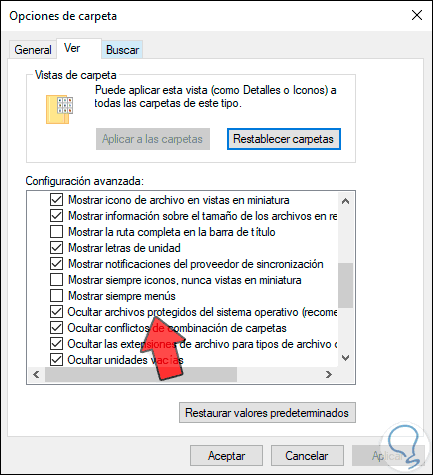
- #WINDOWS VISTA SHOW HIDDEN FILES HOW TO#
- #WINDOWS VISTA SHOW HIDDEN FILES MANUAL#
- #WINDOWS VISTA SHOW HIDDEN FILES CODE#
#WINDOWS VISTA SHOW HIDDEN FILES HOW TO#
Time Required: 5 minutes Here’s How To View Hidden Files and Folders:ġ.Windows XP, 2000 users: To begin, double-click the My Computer icon on the desktop, then skip to Step 4.Ģ.Windows Vista users: Click Start, then Control Panel. Here’s how to change the default settings in Windows so you can view hidden files and folders. Though the default isn’t technically a rootkit, for the inexperienced computer user it can have the same effect. Virus writers often take advantage of this, by dropping hidden files to the system that the casual user can’t see. But if it does, just use it.By default, Windows does not display hidden files and folders. That may not answer your question-e.g., they may just be passing a "filter hidden files" flag to the platform's native file-browser dialog, but you're trying to build a console-mode file-browser and can't do that.
#WINDOWS VISTA SHOW HIDDEN FILES CODE#
(Also, many of them are open source, so you can read their code to see how they do it.) Many of the popular cross-platform GUI frameworks (Qt, wx, etc.) have this support built in. Often, when people are doing something like this, they're building a GUI and want to, e.g., show a file browsers with an option to hide or show hidden files. Some people looking for this answer are trying to reinvent a wheel they don't need to. If anyone plans on putting this code into a library, I would strongly suggest checking for pyobjc first ( import Foundation and, if you don't get an ImportError you win), and only using the ctypes code if it's not available.
#WINDOWS VISTA SHOW HIDDEN FILES MANUAL#
If you need Python 2.5, change the bytes checks to str checks (which of course breaks 3.x) and the with to an ugly try/ finally or manual releasing. If you need OS X 10.5, you need to use the old APIs (or os.listdir) and filter on is_hidden. It should work on any OS X 10.6+ and any Python 2.6+. It works as appropriate on each (e.g., it skips ~/Library on 10.8, but shows it on 10.6). The key functions are CFURLCopyResourcePropertyForKey for is_hidden and CFURLEnumeratorCreateForDirectoryURL for listing a directory.

If you have to get by without pyobjc, you can drop down to the CoreFoundation equivalents, and use ctypes. If you want 10.5 or earlier, directory enumeration flags didn't exist yet, so the only option is something like filtering something like contentsOfDirectoryAtPath_error_ (or just os.listdir) on is_hidden. This should work on any Python that pyobjc supports, on OS X 10.6+. Url,, Foundation.NSDirectoryEnumerationSkipsHiddenFiles, None) Urls = fm.contentsOfDirectoryAtURL_includingPropertiesForKeys_options_error_(

Return url.getResourceValue_forKey_error_(None, Foundation.NSURLIsHiddenKey, None)įm = () And you'll have to keep it up-to-date, as I'm willing to bet the blacklist will change with most OS versions, Finder Info will eventually go from deprecated to completely unsupported, extended attributes may be supported more broadly than HFS+, …īut if you can require pyobjc (which is already included with recent Apple-supplied Python, and can be installed via pip otherwise), you can just call Apple's code: import Foundation Trying to write your own code to handle all of that is not going to be easy. Matches a special blacklist built into CoreFoundation (which is different on each OS version-e.g., ~/Library is hidden in 10.7+, but not in 10.6).There are at least four ways a file or directory can be hidden in Finder, file open panels, etc.: probably follow the same "dot-prefix-means-hidden" convention as ls. And most POSIX GUI file managers/open dialogs/etc.

Coombs's answer is sufficient for Windows.


 0 kommentar(er)
0 kommentar(er)
